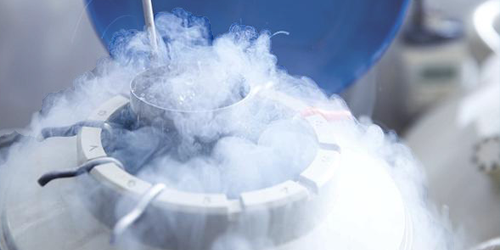
Oocyte vitrification is a revolutionary technique that preserves women's fertility by freezing their eggs for future use. An increasing number of women are choosing oocyte vitrification abroad to ensure the possibility of future pregnancy.
Oocyte Vitrification Abroad details
Oocyte Vitrification Abroad
Prices
About
Egg Vitrification
Egg vitrification is a specialized technique for preserving a woman's fertility. With this service, you will ensure that the eggs maintain their quality and are available for future use in IVF treatments.
Definition
Oocyte vitrification is an ultra-rapid freezing method that preserves eggs using extremely low temperatures. This technique allows women to store their young and healthy eggs for future use when they are ready to conceive.
Countries Renowned for Oocyte Vitrification
Several countries are renowned for their oocyte vitrification and fertility preservation services. Some of these countries include:
- United States
- Spain
- Greece
- Thailand
Procedure Steps
The oocyte vitrification procedure generally involves the following steps:
- Ovarian stimulation to increase the number of mature eggs
- Egg retrieval through ovarian puncture
- Oocyte vitrification by ultra-rapid freezing
- Storage of cryopreserved eggs under special conditions

Specific Indications
Oocyte vitrification is recommended in the following situations:
- Women who wish to delay their maternity for personal or professional reasons
- Patients undergoing potentially fertility-damaging medical treatments, such as chemotherapy or radiation therapy
- Women with medical conditions that may compromise their future fertility
Anesthesia Options
Oocyte vitrification is typically performed under local anesthesia or light sedation. The choice of anesthesia will depend on medical recommendations and patient preferences.
Procedure Duration
The oocyte vitrification procedure usually takes about 30 minutes. However, it is important to note that prior preparation and medical consultations may require multiple visits to the clinic over a few weeks.
Success Rates and Risks
Success rates for oocyte vitrification vary depending on factors such as the patient's age at the time of vitrification and the quality of the eggs. Generally, oocyte survival rates after thawing are high, providing good chances of success when using vitrified eggs.
Risks associated with oocyte vitrification are rare, but they may include a reaction to anesthesia, infection, or complications related to the ovarian puncture procedure. It is essential to discuss these risks with the medical team before proceeding with oocyte vitrification.
FAQ